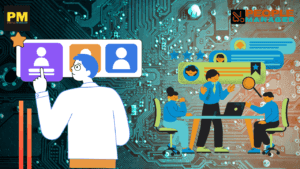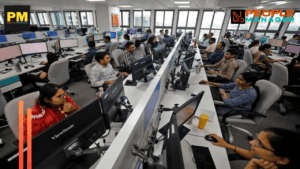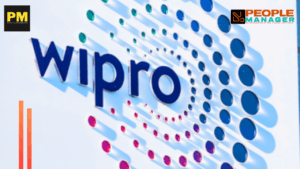Creating a workplace that people love: Why it’s essential, not optional
Jennifer Henderson, NTT DATA’s Senior Vice President of Global Workforce Planning, explores how businesses should create welcoming workplaces that attract and empower diverse workforces, and advocates integration of comprehensive DEI practices to achieve this.

The modern workforce increasingly places Diversity, Equity and Inclusion (DEI) practices at the forefront of their consideration of potential employers. More than a matter of corporate social responsibility, integrating DEI into the business framework is imperative for acquiring top talent and facilitating organizational success.
As companies across India navigate a landscape within which 83% of early-career employees would leave an organization if they didn’t have a formal DEI policy, enterprises must create a culture where every individual feels valued and empowered to grow their career.
What is a diverse workforce, and why is it important?
Having a diverse workforce means more than meeting quotas; it’s about cultivating an environment where all people feel supported and motivated to contribute positively. In India, despite 80% of organizations having a DEI policy with dedicated budgets and formal targets, there is a need for revising and refining these policies to reflect the evolving societal and business landscape.
Organizations which neglect to incorporate DEI initiatives into their internal operations miss out on inclusive perspectives and creative voices sharing ideas of the modern workforce, and the work environment remains inaccessible to many, including people with disabilities, single parents and members of the LGBTQ+ community.
Taking women as a prime example, when gender diversity and inclusion are limited, it perpetuates a cycle of female underrepresentation in the workforce, making it difficult for the next generation of women to enter and integrate effectively. The lack of access to career-specific knowledge and job opportunities not only limits individual women but also hinders the progress of future generations. Significant progress has been made in gender inclusion practices, which account for 73% of DEI initiatives driven predominantly by CEOs and business leaders. This underscores the critical role of leadership in facilitating equal opportunities, allowing individuals to pursue whichever career they desire, without the barrier of traditional gender roles.
Expanding the DEI focus to enhance workplace culture and business success
Recent research finds that companies with the most diverse workforces outperformed their least-diverse counterparts by 29% between 2013 and 2022. Diversity brings different perspectives and skillsets to the workplace, which enhances meaningful collaboration. Diversity in ways of thinking often stems from identity-based experiences, and when people with different thought-processes engage with one another, they tend to drive more holistic and innovative solutions.
For example, companies that lead in disability inclusion have seen 1.6 times more revenue and two times more profit than their competitors, who don’t have a strong commitment to integrating people with disabilities into their workforce. This highlights a direct link between a more diverse workforce and enhanced client outcomes, solidifying the stance that companies should view DEI as a business imperative that not only fosters trust and belonging among employees, but also drives innovation and success.
To drive business growth and establish a workforce that encompasses multiple dimensions of diversity, organizations must begin the process of integrating DEI at the foundation of their work, by actively attracting employees from a wide range of backgrounds. Creating a welcoming and supportive culture that prioritizes inclusiveness from the outset, in recruitment processes and talent acquisition strategies.
Implementing gender-responsive approaches to talent acquisition
Inclusive recruitment processes are not only beneficial for businesses to hire the right candidate, but they also offer an avenue for candidates to assess their potential employer. For example, for businesses to make their workplace culture more attractive to women, gender-specific talent acquisition methods are critical.
To do this, businesses need to implement well-thought-out policies that take gender differences into account. For instance, including career restart initiatives that encourage mothers back to work demonstrates an awareness of the fact that 80% of working women in India take career breaks, usually due to childcare and other responsibilities. Flexible working also allows women to balance childcare obligations with their career commitments. Policies such as these highlight a company’s strategic and gender-responsive approach to their internal operations, encouraging more women to apply to organizations that demonstrate dedication to bringing more women into the mainstream.
Organizations can also increase their appeal among the female talent pool by offering strong growth and development opportunities that indicate a real commitment to their progression, from mentoring to leadership coaching. In India, only 18% of the positions on the boards of the NIFTY 500 companies are held by women, which is unsurprising given the global underrepresentation of women in leadership positions. Women rank opportunities for progression within their top three considerations when applying for jobs, and businesses which offer a clear pathway of personal and professional development for women are best positioned to increase the percentage of their female workforce.
Short-term and easy-to-implement ways of reimagining recruitment also go a long way in appealing to more women. These include skills-based hiring, organizational training on unconscious bias and using gender-inclusive or neutral language in job descriptions. A combination of these recruitment best practices and long-term gender-responsive strategies will help businesses attract and retain women in the workforce.
Harnessing modern technology to create an inclusive hiring process
Digital transformation championed by artificial intelligence (AI) presents an invaluable opportunity for organizations to cultivate an inclusive hiring process.
HR technology powered by AI introduces recruitment practices that are grounded in emphasizing the required competencies for a job role rather than focusing on identifiers like gender, name or education. By mitigating the likelihood of unconscious biases and equalizing the playing field, AI not only speeds up the recruitment process but also makes it a fairer and more inclusive process for a broader pool of candidates.
Future directions in DEI
Looking ahead, companies should anticipate shifts in DEI requirements, incorporating trends such as remote and hybrid working capabilities, which were significantly accelerated by the pandemic. These trends offer new avenues for fostering inclusivity and expanding access to talent.
An authentic commitment to diversity, equity and inclusion underpins a workplace which not only encourages people to thrive within their role, but also enables a work ethic built upon hard work, innovation and equality. By prioritizing initiatives that attract and retain diverse talent, businesses can create an inclusive environment that values all perspectives, fosters innovation and drives business growth.
Stay tuned, to PropleManager.co.in for further updates on the evolving workplace paradigm.









